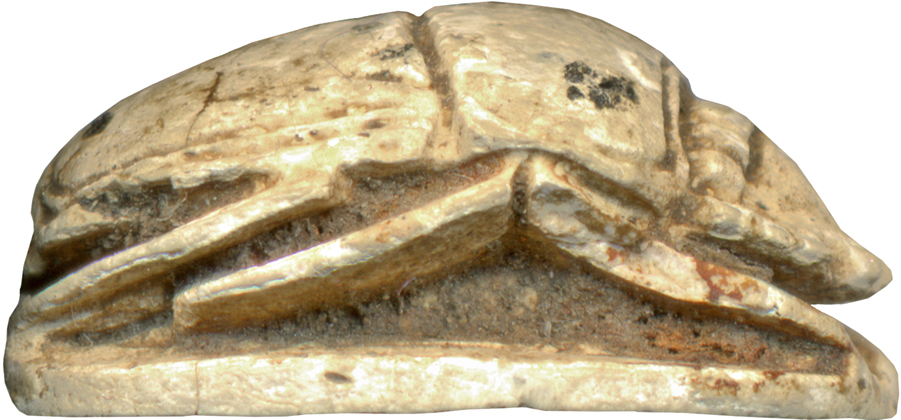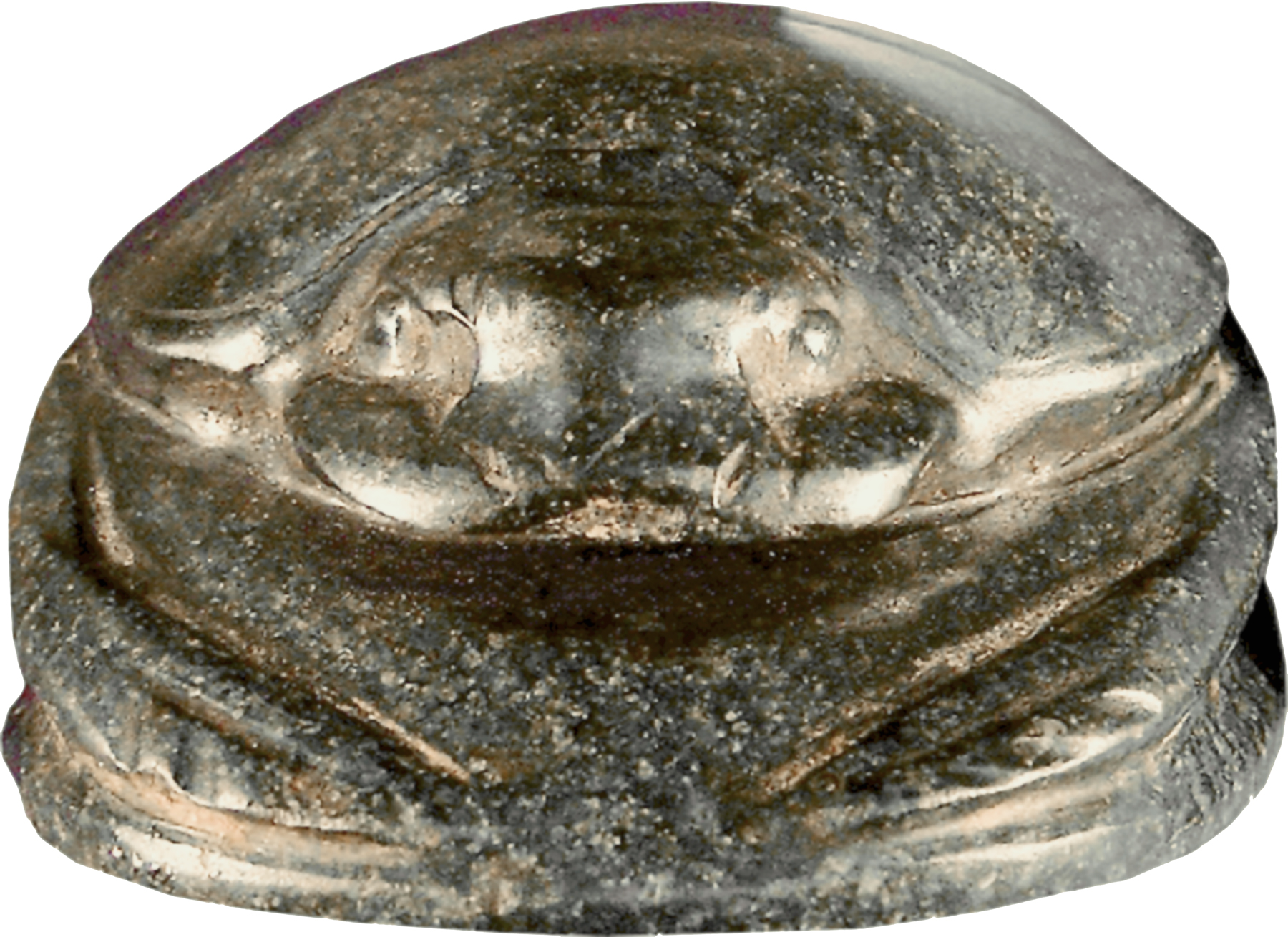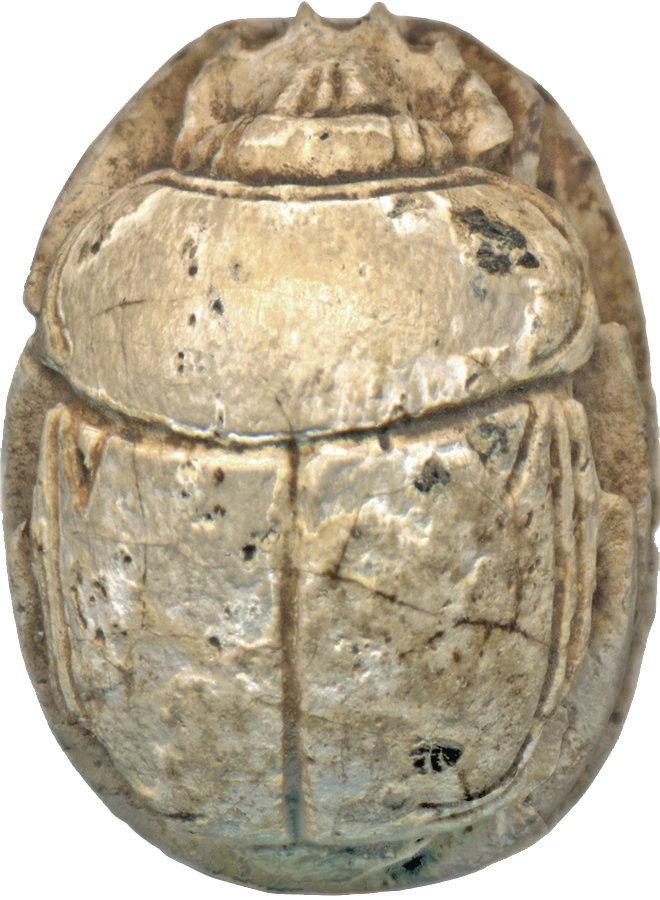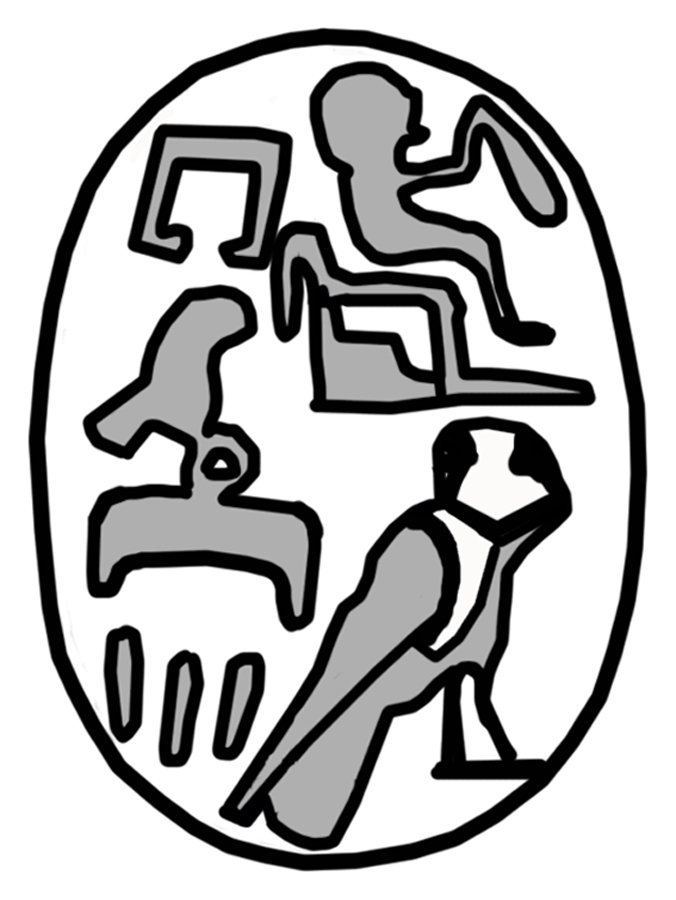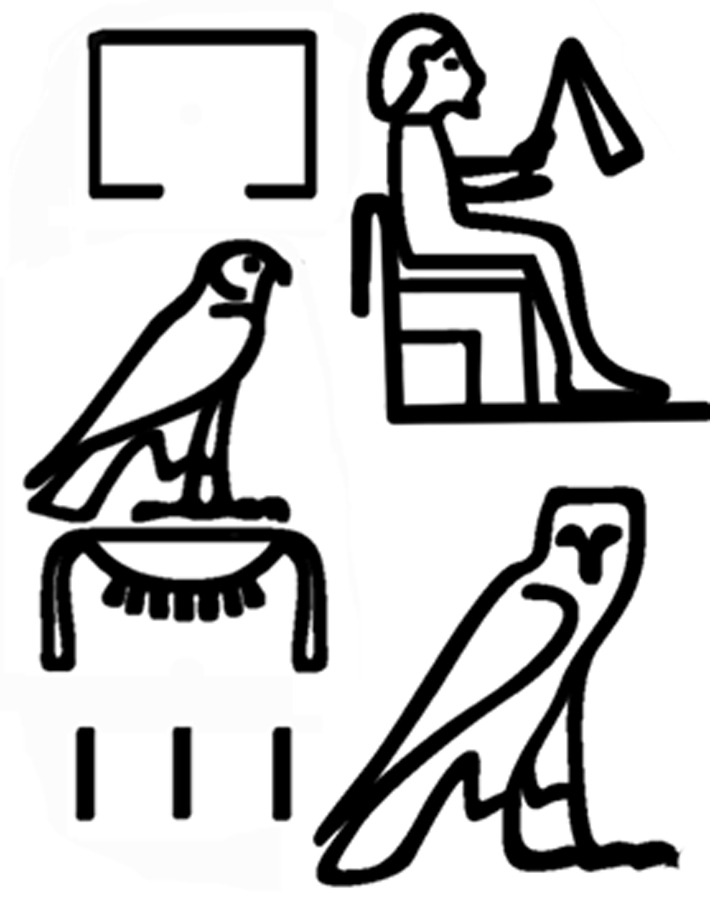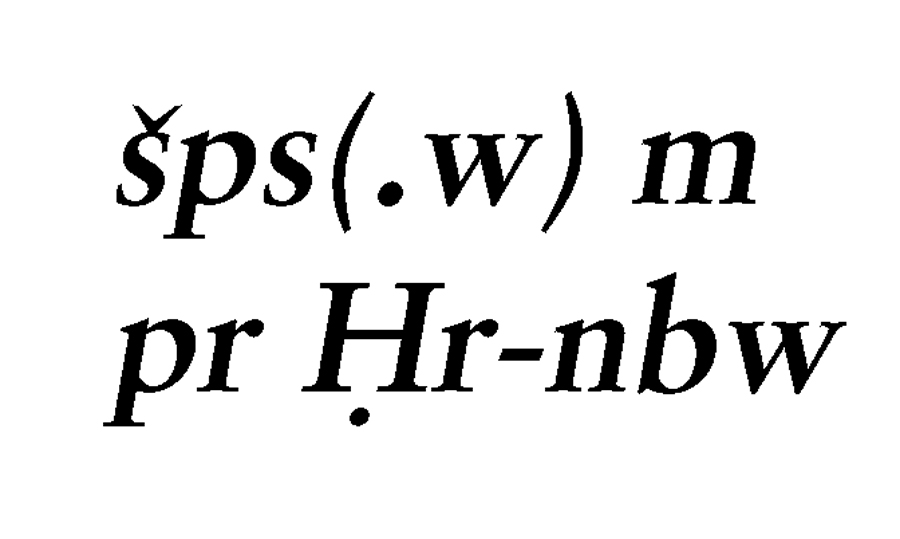Scarab with Wish Formula
(Ancient Egypt and Nubia )
This steatite scarab is inscribed on the flat underside in sunk relief. The vertically arranged column writing is a request to ensure the social status of a member of an elite group. The design of the back of the scarab is very detailed, with deeply incised lines and slightly irregular line flow. The piece is simply made and its workmanship is slightly rough.
This scarab functioned as a status specific amulet with a blessing for a member of the elite. The amulet should express/secure that the owner is notable, prestigious, and well equipped in the royal court/palace. The piece would have originally been mounted or threaded.
The term "Golden Horus" as the name of a god does not appear before the Ptolemaic period, and it is very unlikely that this scarab dates from that period or that this deity would have been mentioned so early.
Inscription
Provenance
Provenance (from the French provenir, 'to come from/forth') is the chronology of the ownership, custody, or location of a historical object. Learn more about provenance at the Walters.
Henry Walters, Baltimore, 1911 (?) [mode of acquisition unknown]; Walters Art Museum, 1931, by bequest.
Geographies
Egypt (Place of Origin)
Measurements
H: 1/4 x W: 7/16 x L: 9/16 in. (0.7 x 1.1 x 1.5 cm)
Credit Line
Acquired by Henry Walters, 1911 (?)
Location in Museum
Not on view
Accession Number
In libraries, galleries, museums, and archives, an accession number is a unique identifier assigned to each object in the collection.
In libraries, galleries, museums, and archives, an accession number is a unique identifier assigned to each object in the collection.
42.8


